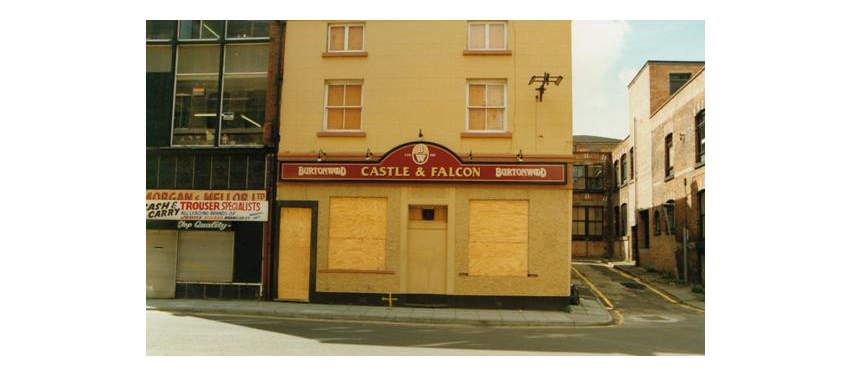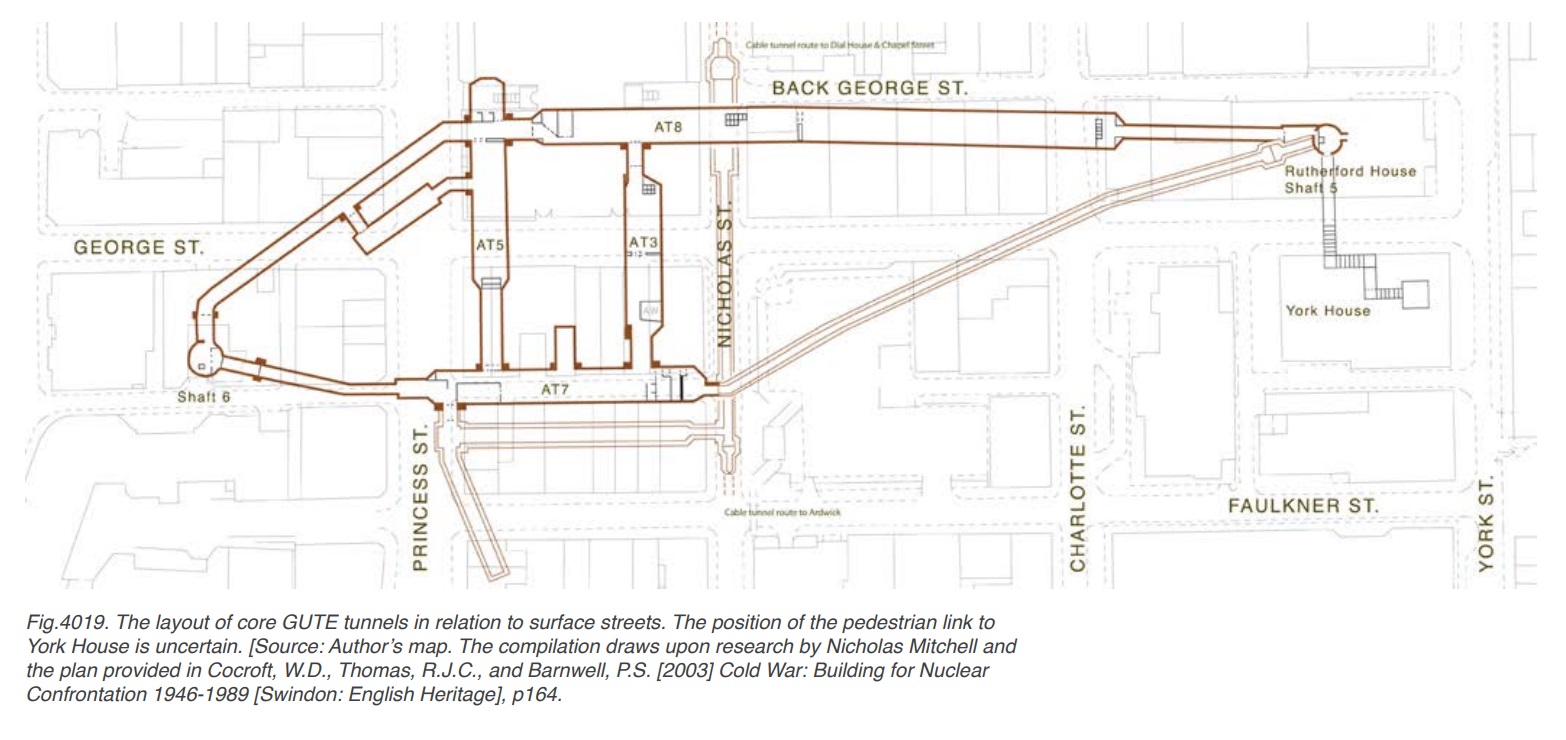
Courtesy: Keith Warrender
As you’d expect with any city that’s been knocking around on maps for a fair few hundred years, there’s been a considerable number of changes, amendments and ‘improvements’ in that time, many resulting in a sprawling ‘hidden’ Manchester right beneath our feet.
Now, as a very lazy man, and someone who barely has time to wash his hair, never mind actually go and investigate these tunnels, I’ve not actually been in any of these tunnels or in fact wish to risk life and limb having a look for real.
Instead it’s been left to a few absolute bloody heroes who take this kind of stuff very seriously and are always looking to uncover the secrets beneath our feet.

One such geezer Mark Crossfield, who has spent the last 6 years tirelessly mapping the hidden tunnels under the city on a brilliant online map. Extensively exploring the history of the city he’s managed to create a map that any old Joe Bloggs can look at right here.
So I went on it. And I found the best ones. Well, the ones that I found interesting. And then I did a bit more research and I am now presenting them to you right here. Enjoy.
Piccadilly to Victoria Underground Rail Link
Post-war Britain was a confusing time filled with Swedish tower blocks, Opportunity Knocks and the fear of getting blown to smithereens by our Russian cousins (more on that later).
There were also extensive re-building plans and projects under way throughout the nation, fixing up and undoing the damage Hitler and his annoying Luftwaffe had done in the 40’s.

One of these proposed projects was an underground railway between the city’s two principal stations, Piccadilly and Victoria, a link that would aim to merge the city’s rather disjointed transport system into one unified network.
In 2012, Cube Gallery on Portland Street was home to an exhibition called Infra_MANC, which was curated by Richard Brook from the Manchester School of Architecture and Martin Dodge from Manchester University’s Geography department.
This exhibition (most of which the information can be found here) uncovered many of the ideas for Manchester’s post-war plans, with keen detail on the proposed Picc-Vic railway.

Incorporating an additional 3 stations within the city centre, the line would run from Victoria, underneath the Royal Exchange, under the Central Library, down Princess Street and finally onto Piccadilly.
With many variations on this idea through the years, we are all aware now that they were finally incorporated into the design of the Metrolink, which was re-introduced into the city in 1992. The whole idea of an underground link was shelved in the late 70’s as well as another one of the 4 main proposals outlined at Infra_MANC.

These 4 projects built up the city’s plan against both threats from the Cold War but also increases in population and traffic that was forecasted for the latter half of the 20th Century.
Of these 4, only 2 became a reality. One is the Mancunian Way – everyone’s most hated road, and the other is the ‘Guardian’ a network of tunnels through the city and to Salford which would have been used should Russia’s nuclear arsenal ever found its way to our shores. More on that later.
The other two, the abandoned ones, were of course the Picc-Vic Underground Railway and… a Heliport. Yep, everyone thought that helicopters were the future so they injected millions into designing and imagining a HUGE heliport at Victoria Station that would link up with similar heliports around the country. Idiots.

Deansgate Tunnel
Way back in the long cold Winter of 1911, a group of workmen demolishing some houses on Cumberland Street (which is now that bit where the entrance to Australasia is) uncovered an underground passage that lead to what has now been termed the ‘Deansgate Tunnel’.
Supposedly large enough to allow a horse and cart to go down it, this tunnel, 70ft below ground is built of brick, has an arched roof and even features erected brick walls along the way that some annoying bugger put in to stop anyone progressing further.

There’s not much else known about this tunnel, except that it perhaps runs right down the length of the city, from the Cathedral to Pomona at the Ship Canal.
Speculation is rife as to who built it, maintained it and even used it – with some believing it started as an old Roman tunnel used to transport togas, sandals and those little gold coins with Caesar’s face on them from one place to another – later being improved upon around 200-300 years ago.
The Roman angle might make sense, seeing as the tunnel passes right next to Castlefield, which eagle-eyed readers will notice was home to a huge Roman Fort Mamucium (remains of which are still there).

OLYMPUS DIGITAL CAMERA
Courtesy: ojaybelowandbeyond.blogspot.com/
Castlefield acted as the main centre of the city in those days, with Deansgate the major thoroughfare from Chester and then up to the settlements in Wigan and York. To think that over the years this road ended up being built on over and over isn’t too far out of the realm of believability – especially considering what the Victorians did down near the Cathedral…
Rumoured Cathedral Tunnels
Now, there’s not much in the way of actual evidence of these tunnels even existing except for a few passing mentions in some dusty old books or on the lips of some dusty old nuns. But speculation is rife that there are extensive passageways that lead from Manchester Cathedral to a variety of locations around the city and its outskirts.
The age and location of the Cathedral, which will have acted as the true centre of the city for many, many years, hints at a series of tunnels and passageways which were used extensively through the Reformation and other periods of religious unrest.

Many of the passageways connect the Cathedral to pubs; and in the case of a rumoured tunnel from the cellar of the Castle & Falcon Pub, Keith Warrender’s Underground Manchester explains how a heavy door was discovered in 1975 which contained cob-webbed skeletons and a passage which led to the cathedral.
Interestingly, the pub started life as a Church before becoming a Women’s Prison – indicating that a direct passage to the Cathedral would have been highly advantageous to any priests or bishops that didn’t want to mix with the peasants on the streets above.

Similar rumoured tunnels lead to New Bridge Street next to Victoria Station and even as far as Moston College over 2 miles away.
The only one to have been confirmed though is a short tunnel linking the Cathedral to Chetham’s Well – which was found around 1842 and naturally would have acted as a great convenience between the Cathedral, the well and Chetham’s Library.
Guardian Underground Telephone Exchange
Nothing to do with the newspaper, the Guardian Underground Telephone Exchange (GUTE) was built as a direct reaction to the fears of Cold War nuclear destruction, intended to act as a safe communications network that could link with similar ones in Birmingham and London.

Courtesy: Keith Warrender
Anyone who has seen Threads will know that in the event of a nuclear event, all of this would have been completely worthless, but you can’t fault the Government for trying to dispel fears and instil some form of order if such an event took place.
Much as I imagine subterranean Disney World to be, the GUTE is a series of large concrete tunnels, big enough to drive one of them little golf buggies down in some instances, which was to act both as a communications network but also a series of bunkers to escape the worst of the destruction and fallout.

Set 112ft below the city, the GUTE managed to have its own self sufficient drinking water, as well as a series of specially constructed bunkers which would have been used to house certain VIPs and nerds should war break out. The location was kept secret for years, with two anonymous doorways in Chinatown and Piccadilly the only way to get in or out.
Nowadays the tunnels are still intact and are used extensively by the likes of BT, Nynex and probably a load of broadband companies. If you can manage to get yourself down there it will be the best place to pretend to be a Bond villain, but you’ll probably either get arrested or die first, so just grow a third nipple or buy a fluffy white cat instead.
That’s it. There are my favourites. Of course there’s LOADS more that I could talk about but I think I’ve gone on long enough by now.
As anyone who knows me will tell you, I have clearly done very little in the way of research on all of this – most of my information has come from the excellent graft of Keith Warrender author of Underground Manchester: Secrets of the City Revealed and Below Manchester: Going Deeper Under the City – two excellent books that explore the spaces beneath our feet.
Also, of course, Mark Crossfield whose Hidden Manchester Map is a valuable resource for anyone looking to delve deeper (yes!) into Manchester Underground. You can and should visit his site below…

